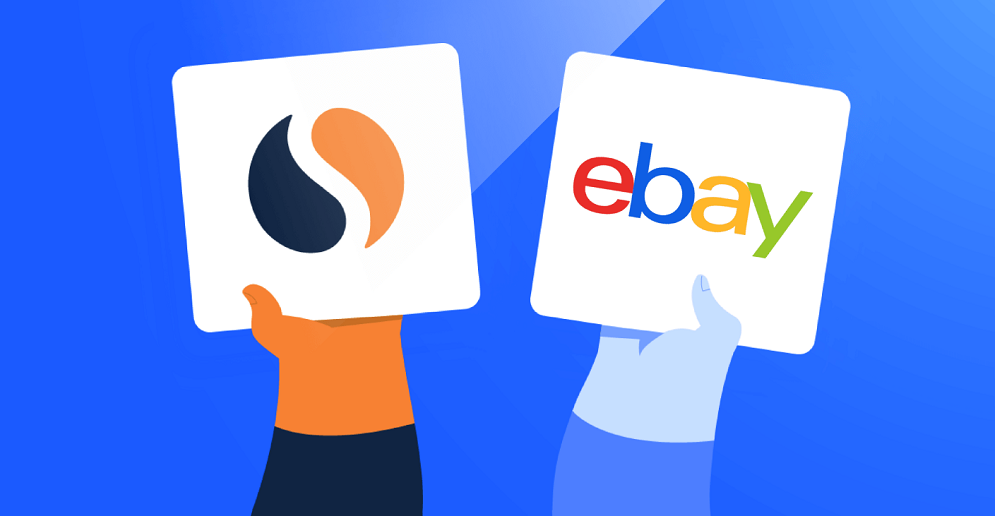
If there’s one thing consumers have a ton of, it’s options. From department stores bespoke boutiques to online hype hubs, there seems to always be a new must-have brand on the rise.
As the number of consumers continues to grow, so is the popularity of one-stop online marketplaces that offer everything from beauty and personal care, consumer electronics, food, apparel, and more.
Different marketplaces have specific requirements, product categories, audiences, and listing fees. It’s your job to compare and choose the best one to support your business needs. But don’t worry – we’re here to get you started.
Amazon and eBay are two of the largest e-tailers in the world, and unsurprisingly, are often the first choice for online shoppers.
What’s the difference between Amazon and eBay?
From the outside, selling on Amazon and eBay might not look that different. Both are synonymous with the definition of an online marketplace, offering a wide array of consumer products and have been household names for years.
One key difference, however, is that eBay also functions as an auction platform with the added buy it now option. For that reason, it’s the main choice for those looking to sell both new and used products.
Additionally, eBay works only with third-party retailers – either individuals or businesses. Amazon does this in addition to selling products from its own private label.
Another key difference? When it comes to revenue, Amazon is the titan of the industry. Case in point – it recently announced its net sales increased 22% to $469.8 billion in 2021.
What does the data say – eBay or Amazon?
As a whole, amazon.com is the traffic winner. The site earned 2 billion visits in the U.S. between January 2021-2022. By comparison, ebay.com clocked in at 632 million. Both sites maintained steady levels of traffic throughout the year, with peaks occurring around the holidays for both, and during Prime Day for Amazon.
Website traffic can give a macro view of each marketplace online, but if you’re a retailer selling a specific product, such as only consumer electronics or only apparel, you’ll want to dive deeper into the eCommerce metrics for that segment.
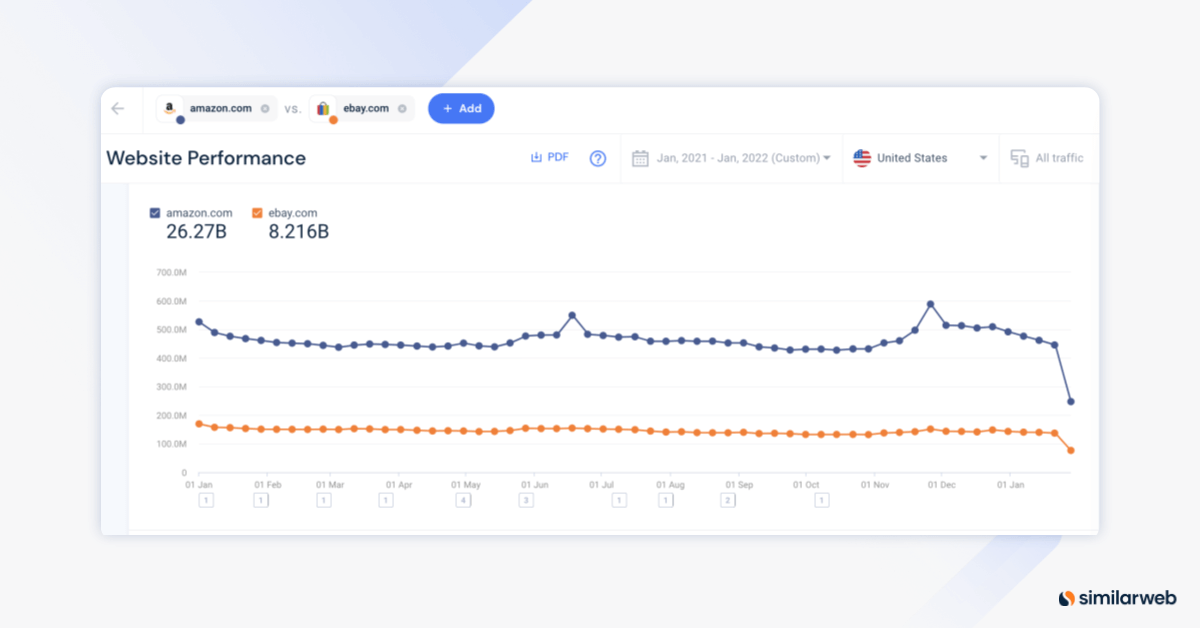
With the right tools, you can track consumer behavior, keyword competitiveness, and conversion rates across different segments to dive deeper into the metrics that matter most.
Check out this quick video on how to do all that and more with Shopper Intelligence, or keep reading for our eBay and Amazon comparison.
Audience demographics
Gender and age distribution for Amazon and eBay are similar, but there are a few subtle, but important differences depending on your target audience.
As you can see below, ebay.com receives over 60% of its traffic from male visitors, whereas on amazon.com the split is closer to 50/50.
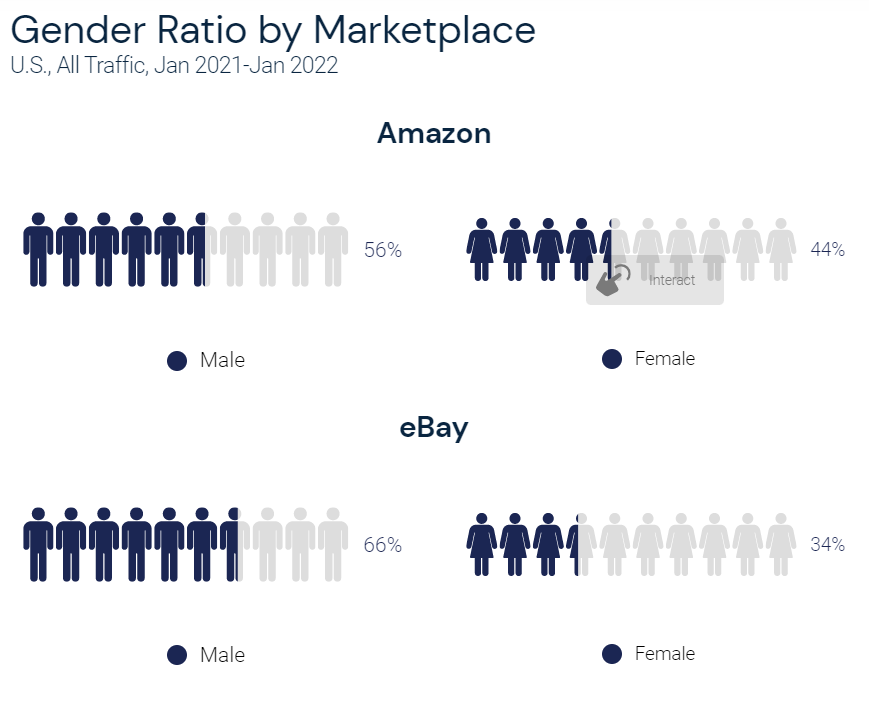
Most visitors to amazon.com and ebay.com are between the ages of 25-34. eBay is more popular with those 65+ whereas Amazon is fan-favorite among millennials and Gen Zers.

Engagement metrics
Engagement metrics give you an idea of how much your audience enjoys your content. It’s an important metric for anyone in eCommerce – the longer a user spends on your site, the more likely they are to actually make a purchase or click on an ad. Some numbers to keep an eye on are:
Device distribution is another aspect of user engagement that tracks how your visitors are actually coming to your site.
When deciding if it’s better to sell on Amazon or eBay, device split can help give you a better understanding of which marketplace aligns with your main efforts towards content creation, user experience, and ad spend.
For example, if you notice that most of your current customers access your site via desktop, then Amazon might be the top choice for you. If you have a strong mobile web presence or divide your efforts equally across different devices, then eBay is your go-to. Keep in mind that Amazon attracts most of its mobile traffic from its mobile app, currently the most used Shopping App on Google Play.
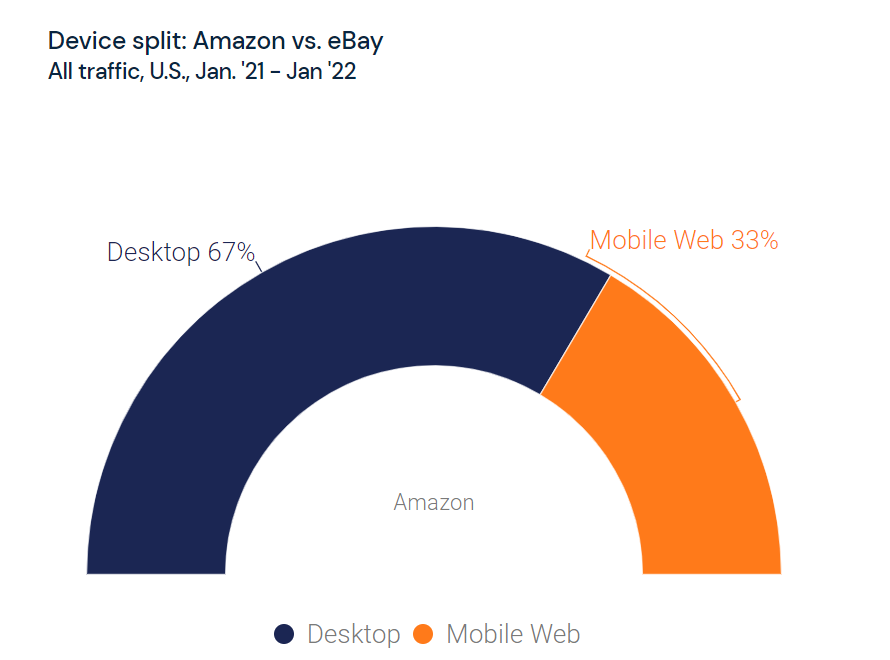
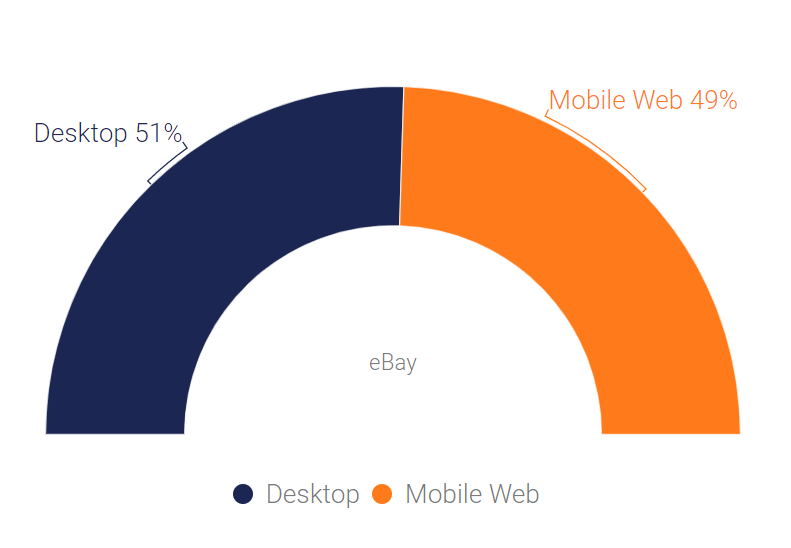
Main traffic channels
With a view into marketing channel performance, you can pinpoint the marketplace with the best potential for high-quality traffic based on your consumer preference. For example, if your company generally sees the best ROI on social media, you’ll want to look for the marketplace that can match your conversion expectations.
Direct is the main traffic source for both amazon.com and ebay.com, sending 855 million and 207 million visits to each site respectively in January 2022. Both marketplaces fall way above the eCommerce industry benchmark.
eBay seems to have invested heavily in paid search over the year, edging out the eCommerce average (6.8%) with 7.0% traffic share.
Amazon performs strongly in key channels, including referrals (paid) and social (free). Sellers also have the option to invest in Amazon Ads, the marketplace’s own advertising ecosystem, to gain more visibility on certain products.
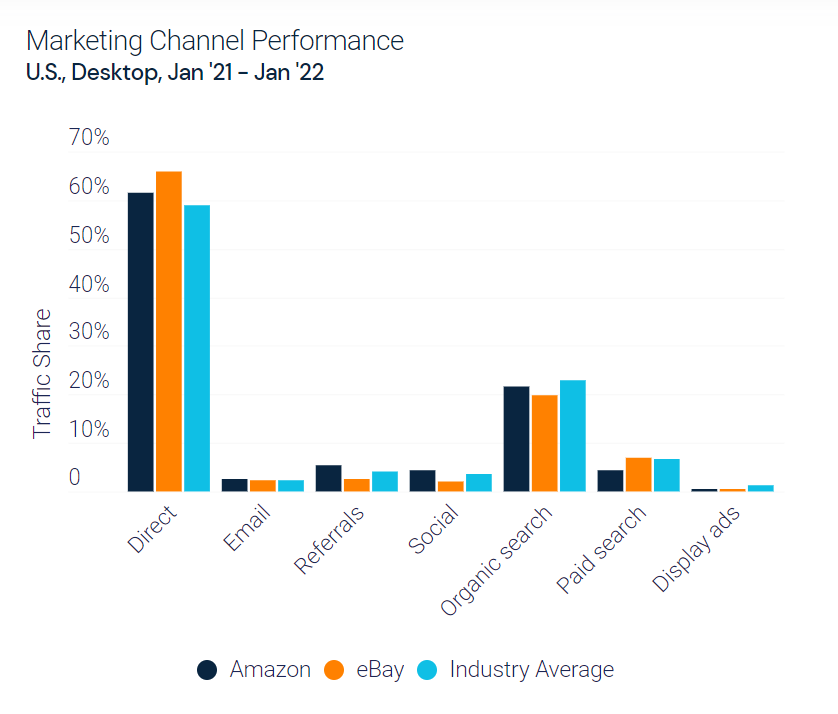
Advertising options
Top non-branded keywords sending traffic to eBay.com via paid search last year were xbox series x, pokemon cards, ps5, rtx 3080, and nintendo switch. For Amazon, top paid keywords, although non-branded, were more specific to Amazon as compared to general terms like eBay: prime video, kindle, aws, prime gaming, and kindle unlimited.
Amazon wins a huge majority of the traffic share from coupon and rebate affiliates. Between January 2021-2022, amazon.com reviewed 71.1% of the total traffic from slickdeals.net (compared to eBay’s 28.9%), and 80.3% from dealnews.com. The marketplace also wins almost all of the traffic coming from the top news and media websites.
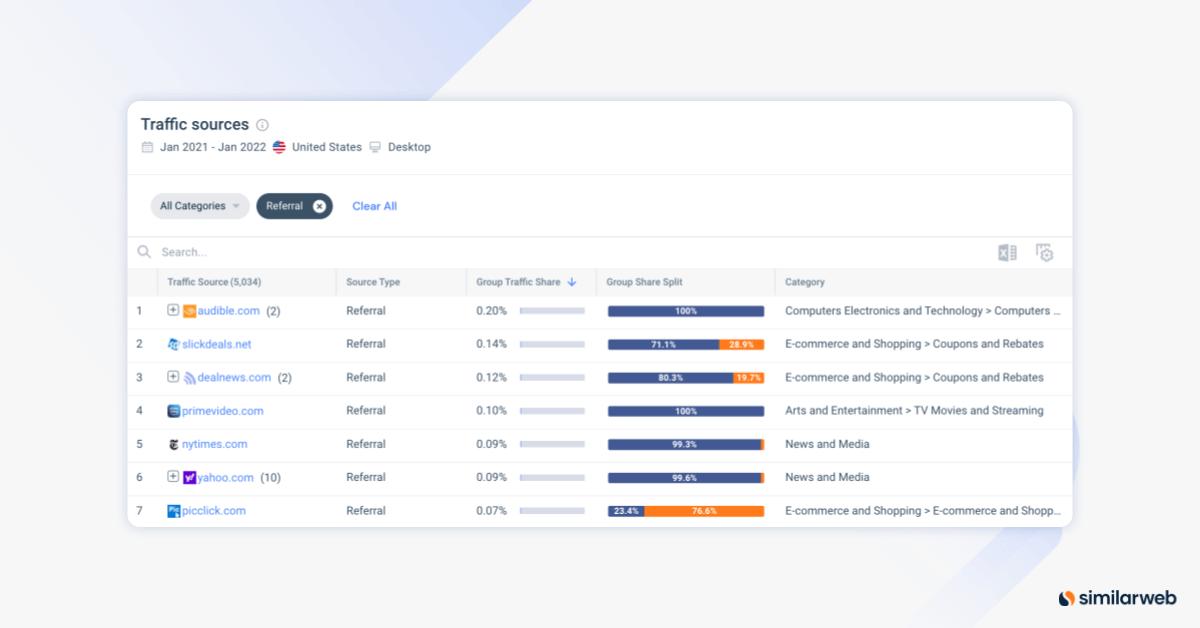
Amazon selling fees vs. eBay
Generally speaking, it’s cheaper to sell on eBay compared to Amazon. Of course shipping and fulfillment costs may vary based on your offering, but sellers will earn more on average on eBay.
Each marketplace has slightly different plans depending on the size of your business. Amazon offers two seller plans: the Individual plan ($0.99 per unit sold) and the Professional plan ($39.99 per month no matter how many units you sell). In addition, the site charges a referral fee for each item sold, usually between 8% and 15% depending on the product category.
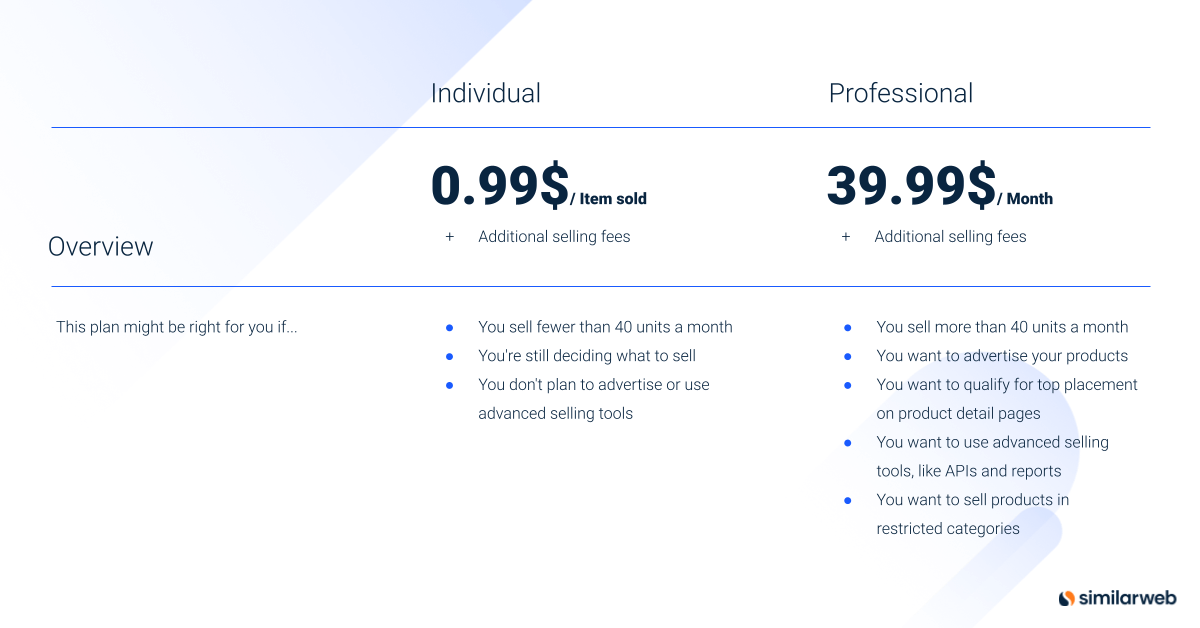
eBay, on the other hand, operates with a “you only pay a fee if your item sells” mentality. For most sellers, it’s free to list on eBay. If you’re planning to list more that 250 items per month, you’ll start paying an insertion fee of $0.35 per listing. If your item sells, eBay keeps a final value fee of on average 12.55%, plus $0.30 per order.
For larger businesses, eBay offers a variety of store subscriptions and benefits, broken down in the chart below:

Overall, eBay charges lower fees. Amazon’s average fee is 15%, more than eBay’s average final value fee of 10%. Amazon also charges a closing fee of $1.80 per unit sold for products in the Books, DVD, Music, Software & Computer/Video Games, Video Game Consoles, and Video Game Accessories categories.
Shipping and fulfillment
How (and for how much) your products are delivered to customers should weigh on your decision if Amazon or eBay is better for your business.
One of the biggest draws for Amazon is its Fulfillment by Amazon program. For free, you can store your goods at one of Amazon’s warehouses and they’ll take care of the packing, shipping, returns, and even customers when orders are placed. If you’re looking to take the stress out of the process, Amazon is the choice for you.
eBay doesn’t offer its own fulfillment center, so you could always partner with a third party to help streamline the process. The marketplace offers direct integration with a variety of shipping carriers to protect sellers against fraud and false claims.
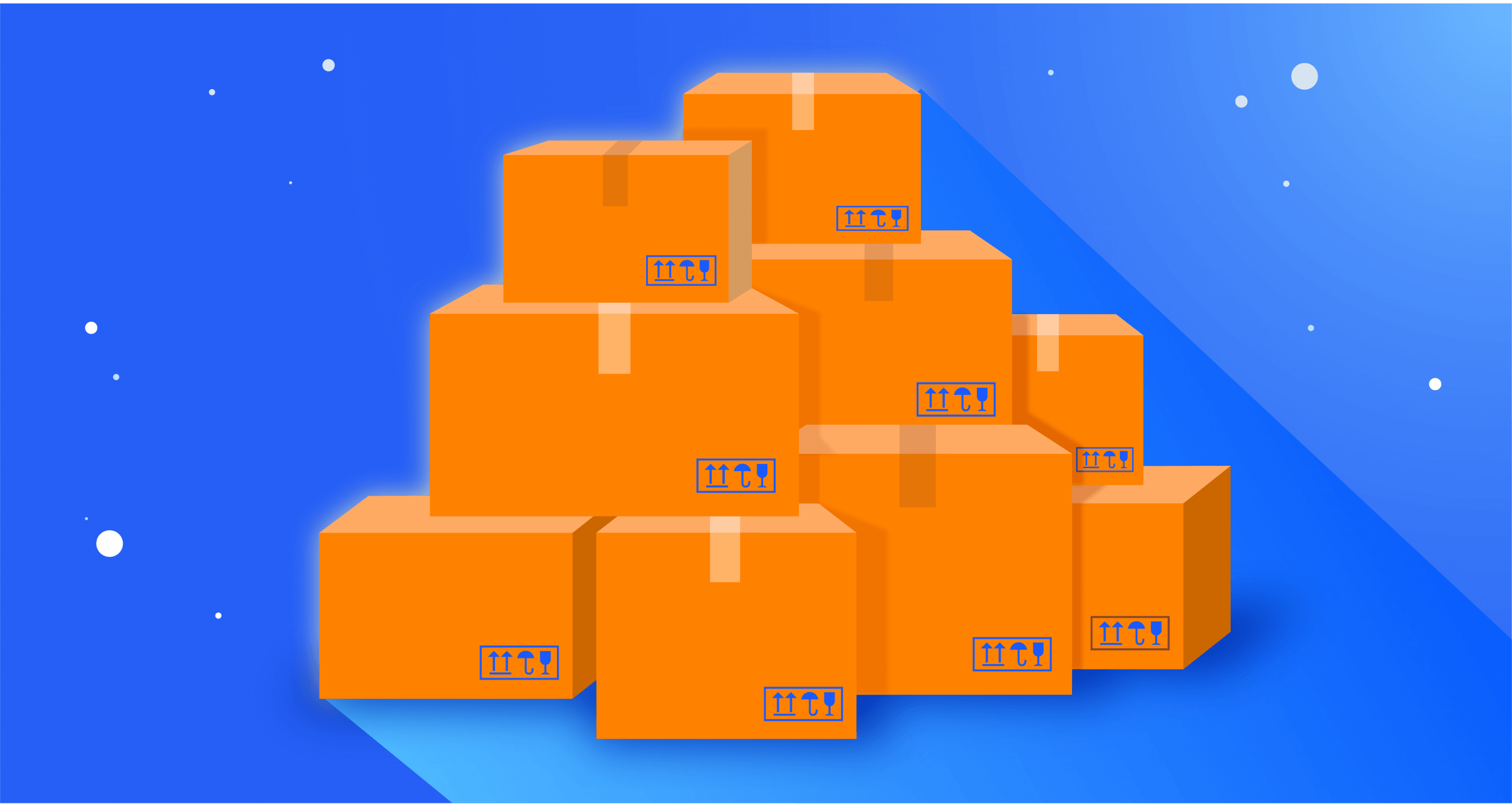
Amazon vs. eBay: which do customers trust?
Both Amazon and eBay are well-established marketplaces that consumers have kept coming back to since the mid-1990s. However, it’s very hard to create complete trust in the digital world. Both facilitate transactions between two parties who have never met, and probably aren’t even in the same city, state, or even country.
In order to buy online, customers have to trust that if their order is not fulfilled, they can easily get their money back.
And here we encounter one of the key differences between Amazon and eBay.
When it comes to customer satisfaction, Amazon is top-notch. I personally have experienced many times where a package was lost, damaged, or just not what I expected, and returns and refunds with Amazon were quick, painless, and most of the time, done from a chatbot without having to actually talk to a real person. This smooth process tends to promote high customer loyalty to Amazon.
While Amazon has a reputation for easy return and refund processes, eBay’s return policy is a bit more complicated and can be a factor for hesitant buyers.
So, who should you choose?
At the end of the day, you have to make the decision that’s best for your business. My advice to you? Decide which features you can and can’t live without as a seller, and then take it from there.
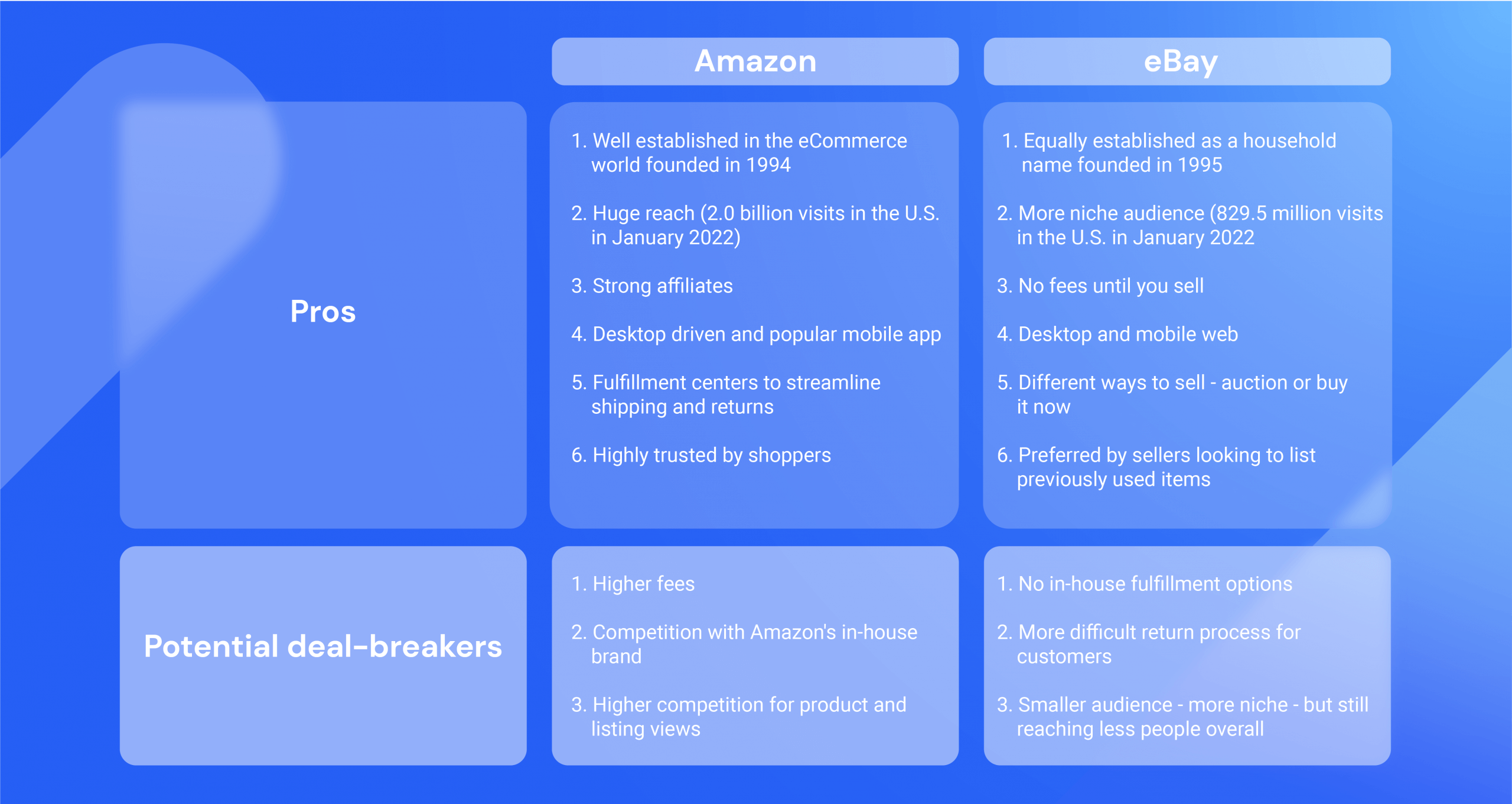
To learn more about the data behind this article and what Similarweb has to offer, visit https://www.similarweb.com/.







Sign up to receive our stories in your inbox.
Data is changing the speed of business. Investors, Corporations, and Governments are buying new, differentiated data to gain visibility make better decisions. Don't fall behind. Let us help.













Sign up to receive our stories in your inbox.
Data is changing the speed of business. Investors, Corporations, and Governments are buying new, differentiated data to gain visibility make better decisions. Don't fall behind. Let us help.





